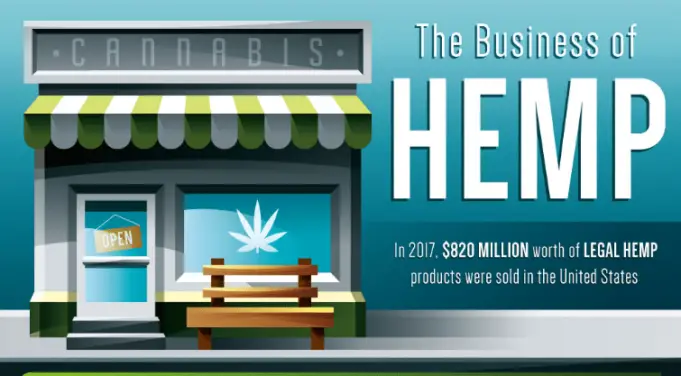In 2017 hemp was grown across 19 states with farmland covering an acreage of over 25,000. Nearly 1,500 licenses were issued to businesses and individuals to grow hemp and it became the focus of research projects in 32 US universities. Pretty good for a legally defined narcotic.
Back in the 17th century, a very different reality surrounded hemp. In the days of early American colonization, hemp was not illegal and in fact it was a staple crop. Used in the production of textiles of every variety, hemp was a necessity and very well helped to build America.
Hemp was considered legal tender in Pennsylvania, Virginia, and Maryland and in 1619, the Virginia Assembly even passed a law that required farmers to grow hemp. By the 19th century, marijuana began trickling in and doctors commended it for its medicinal benefits.
However by the turn of the century, public opinion began to wane, cotton became the king of crops, and in 1937 the Marijuana Tax Act eradicated the need for hemp by banning it’s cultivation and use, recreational or otherwise.
Once a popular ingredient in over the counter and prescription drugs alike, modern science has chipped away at the layers of hemp and marijuana’s health benefits. Isolating CBD, an ingredient and active component with non-psychoactive properties, scientists and healthcare experts have huge amounts of data proving its effectiveness in treating a myriad of conditions.
Reacting with the serotonin receptors in the brain, CBD supplements have been shown to treat chronic pain, anxiety and depression, and even ease discomfort associated with cancer treatments. Today over $800 million worth of legal hemp products are sold in the United States ranging from textiles, cosmetics, industrial applications, and the most popular, medical CBD products.
As a supplement, CBD can benefit just about anyone, regardless of conditions or symptoms to treat. CBD has been shown to reduce acne, inflammation, insomnia, and nausea. Hemp seeds are an interesting source of complete portion, offer healthy fats, and vitamin E.
The Omega-3 and Omega-6 fatty acid content improves the quality of skin and is shown to relieve eczema, Soluble and insoluble fiber, necessities for a healthy diet, are also found within hemp and helps to promote healthy digestion. Even symptoms of menopause and premenstrual syndrome are shown to be improved thanks to the Gamma-linolenic acid (GLA) content.
In 2014, the US farm Bill authorized states to start pilot projects for hemp cultivation, provided the growers and their land were registered with their respective states. Fast forward to today with the updated 2018 US Farm bill that could potentially legalize hemp production nationwide, greatly surging forward the fight.
As more and more states begin legalizing medical marijuana and even recreational marijuana, curiosity grows. Obviously history tells us that there is more to hemp and marijuana products than we realize, and the long prohibition of cultivation itself raises some interesting questions.
Though legal challenges persist, many of them dating back a century, the work of scientists, business leaders, and an open minded public are on the right track to rewriting antiquated laws. Take a look at this infographic for more on the business of hemp, its effects on the environment, economy, and most importantly, healthcare.













